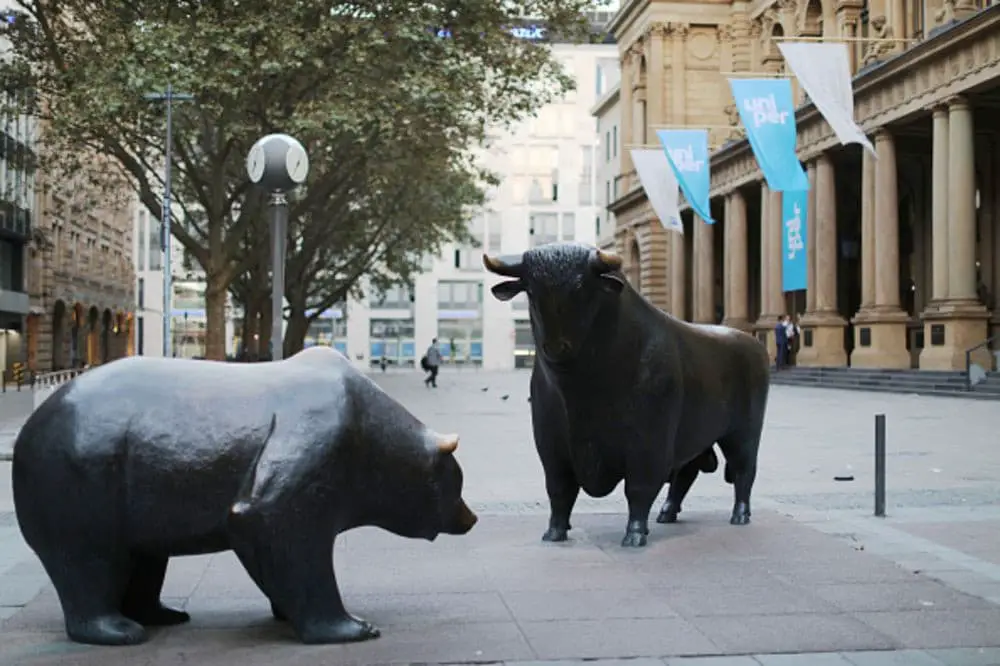Do you know the difference between a bull trap vs bear trap? Many traders do not, but it is an important distinction to make if you want to be successful in the markets.
In this article, we will compare the differences between these two types of traps and how to avoid them. We will also look at some real-world examples of each type of trap so that you can see them in action.
What is a bull trap?
A bull trap is a false signal that occurs during an uptrend. It tricks traders into believing that the trend will continue when in reality it is about to reverse. Bull traps are typically characterized by a sharp increase in price followed by a rapid decline.
What is a bear trap?
A bear trap is a false signal that results in a decline in prices. It occurs when the price of a security drops sharply, only to rebound soon after. This sharp drop tricks investors into selling their holdings, thinking that the price will continue to fall. However, the price typically rebounds soon after, leading to losses for those who sold their holdings.
How do you know if it's a bull or bear trap?

A bull trap has some key characteristics that differ from a bear trap. For one, a bull trap is generally characterized by a sharp price movement followed by a sudden reversal.
This sharp price movement usually occurs after a period of consolidation or what's known as a "false breakout." A false breakout is when the price breaks out of a range but then quickly reverses and moves back into that range.
Bull traps have this false breakout followed by a sharp price movement in the opposite direction. This sharp reversal is what "traps" the bulls, or buyers, who think the breakout is real and continue to buy only to see the price head lower.
Bear traps do not have the same characteristics as bull traps. This is because a bear trap is designed to "trap" the bears, or sellers. A bear trap generally has a false breakout to the downside. This means that the stock price will move lower, and then quickly move back higher. This can bait the bears into selling, or shorting a stock.
Once the bears have been "trapped", the stock price can quickly move higher, leading to a loss for the bears. Bear traps can be difficult to identify, but they can be a powerful tool for traders.
Another key difference is that a bull trap will generally have higher volume during the sharp price movement followed by lower volume during the reversal. This is because when the market is caught in a bull trap, you'll see buyers get fooled into buying only to see the price quickly reverse lower.
Bear traps have less trading volume because there are generally fewer participants buying during a bear market. When the price breaks out to the upside, there is typically less buying interest because participants are more cautious after a sustained downtrend.
The key to identifying the difference between a bull trap and a bear trap is to pay attention to the volume, and the initial direction that the price moves in.
How to identify and avoid bull and bear traps?

The best way to identify a bull or bear trap is by paying attention to the price action. If the market spikes up and then quickly reverses, that's a bull trap. If the market drops quickly and then reverses, that's a bear trap. Here is a more in-depth look at how to identify and avoid bull and bear traps.
How To Identify Bear Traps
Bear traps can occur in any market and at any time frame. However, they are most common during downtrends, as investors are more likely to sell their holdings when prices are falling. This means to identify a bear trap, you need to be able to spot a downtrend.
The first step is to identify the trend. This can be done by using trend lines, moving averages, or other technical indicators. Once you have identified the downtrend, you need to look for a price reversal. This is where the prices start to rise, despite the overall trend being down.
If you see a price reversal, it doesn't necessarily mean you are in a bear trap. To confirm that it is a bear trap, you need to wait for the prices to start falling again. This is where the trap is set, and investors who bought into the reversal are caught out.
How To Avoid Bear Traps
To avoid being caught in a bear trap, you need to be patient and wait for confirmation that prices are falling again before selling. This can be a difficult thing to do, as it goes against our natural instinct to sell when prices are rising. However, by waiting for confirmation, you can avoid being caught out by a bear trap.
How To Identify Bull Traps
Bull traps are most common during uptrends. They often form after a period of strong buying pressure that causes prices to rapidly increase. This buying pressure eventually dries up, leading to a sharp decline in prices. To identify this price movement, it can be helpful to look for two things:
The first is a candlestick pattern known as a bearish engulfing pattern. This occurs when a candle with a small body forms after a large bullish candle, and the small candle's body completely engulfs the prior candle's body. This pattern indicates that buyers are losing control and that prices are likely to continue falling.
The second thing to look for is a break of support. This occurs when prices fall below an important level that has previously served as support. A break of support often leads to further declines, as it indicates that buyers are no longer willing to step in and prop up prices at that level.
How To Avoid Bull Traps
The best way to avoid getting caught in a bull trap is to be patient and wait for confirmation before entering a trade. For instance, you could wait for the bearish engulfing pattern to form before selling, or you could wait for prices to break below support before shorting.
You should also pay attention to the overall trend. If prices are in a clear uptrend, then you should be cautious of bull traps. This is because they are more likely to
occur during uptrends. Investors and traders can often get caught in FOMO and it is prime time for bulls to get trapped in the excitement of potential profits.
Finally, it's important to use stop-loss orders when trading. A stop-loss order is an order that automatically sells your position if prices fall below a certain level. This can help you limit your losses if you do get caught in a trap.
Conclusion
Whether you are a bull or a bear, traps are all around us in the market. The key is to be aware of them and to have a plan for when they occur. By being prepared, you can avoid being caught off guard and making costly mistakes.

